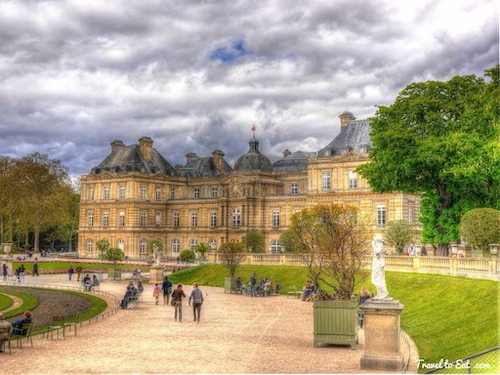
The weather is getting nicer here in Paris, so I have decided to do a series on the gardens of Paris. The Luxenbourg Gardens came about as a result of Henri IV's assassination in 1610. His wife, Marie de Medicis, could not continue living in the Louvre with his memory. She had the Palais du Luxembourg and the surrounding gardens built to replicate her childhood home, Florence’s Palazzo Pitti. The Luxembourg Gardens were completed in 1625, but did not reach their present dimensions until 1790. The park has been open to the public since the 17th century. The construction of nearby streets and avenues during the Second Empire reduced its size, but not its general appearance. The park is the garden of the French Senate, which is itself housed in the Luxembourg Palace.
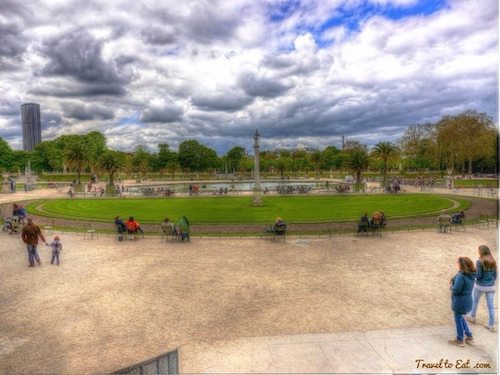
At the center of the park is an octagonal pond, with a central fountain, known as the Grand Bassin. Apparently, children can rent small boats here on the weekends. There are many other attractions for children such as the puppet theater, pony rides and a merry-go-round. A balustrade goes around the outside where there are groves of trees and walkways.

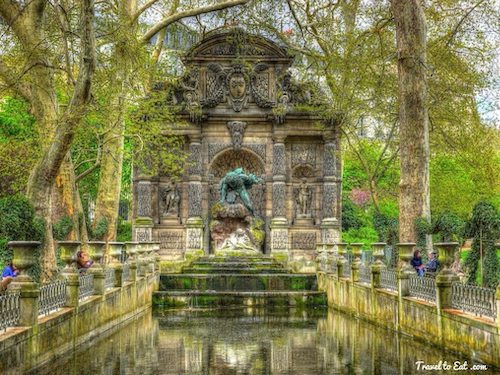
This is the famous Fontaine Médicis, a romantic Baroque fountain designed in the early 17th century by Tomasso Francini. It is located at the end of a small pond at the northeast side of the park. A central sculpture group shows the Greek mythological figure of Polyphemus who watches the lovers Acis and Galatea. It is flanked by allegorical figures depicting the rivers Seine and Rhône. In 1811, at the command of Napoleon Bonaparte, the fountain was restored by Jean Chalgrin, the architect of the Arc de Triomphe. In 1864-66, the fountain was moved to its present location, centered on the east front of the Palais du Luxembourg. The long basin of water was built and flanked by trees, and the sculptures of the giant Polyphemus surprising the lovers Acis and Galatea, by French classical sculptor Auguste Ottin, were added to the grotto's rockwork.

This being France, there is a place to have a drink or a bite to eat, surrounded by a lovely green forest.
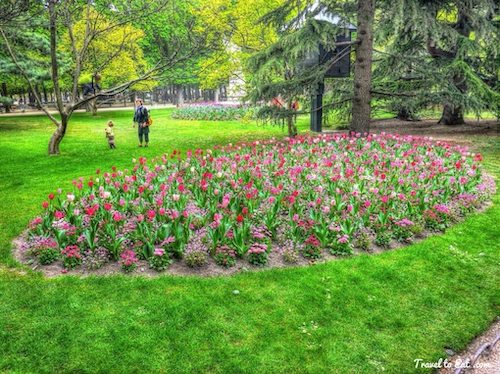
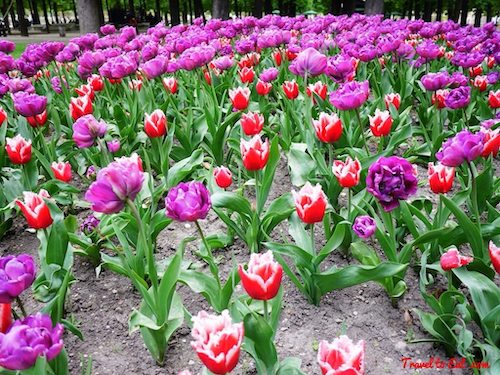
In among the trees are beds of tulips including these red tulips with ragged edges.

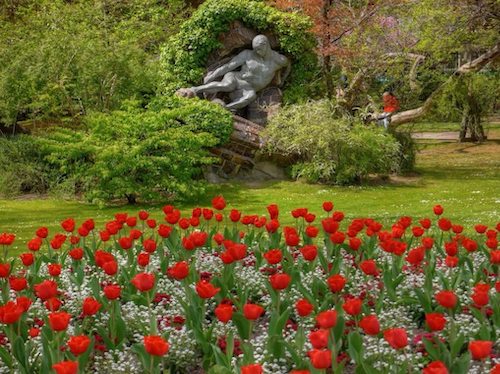

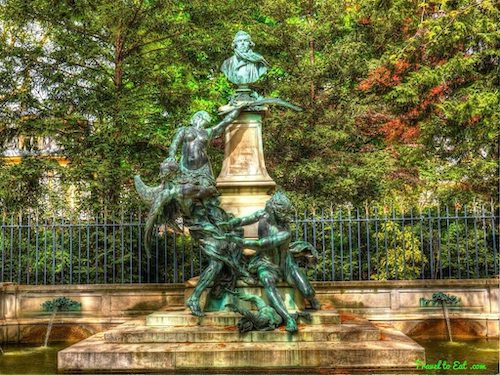
The garden contains just over a hundred statues, monuments, and fountains, scattered throughout the grounds. Surrounding the central green space are about twenty figures of historical French queens and female saints commissioned by Louis-Philippe in 1848. The Pantheon (see my post) is just next door to the gardens and can be seen down between the trees.
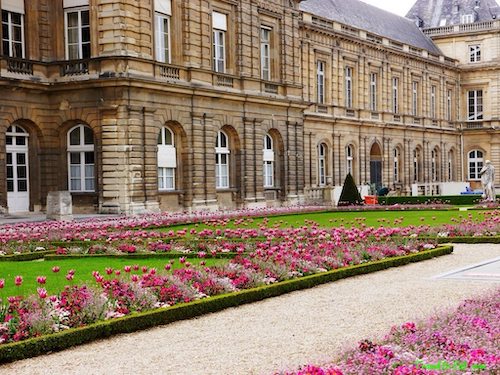
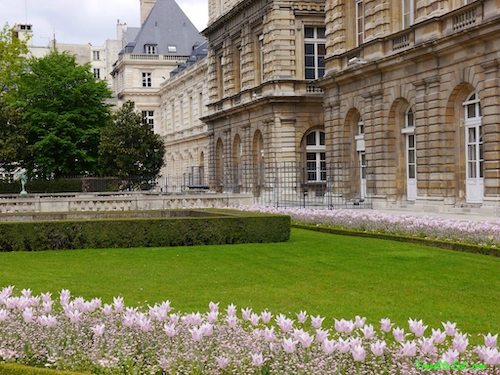
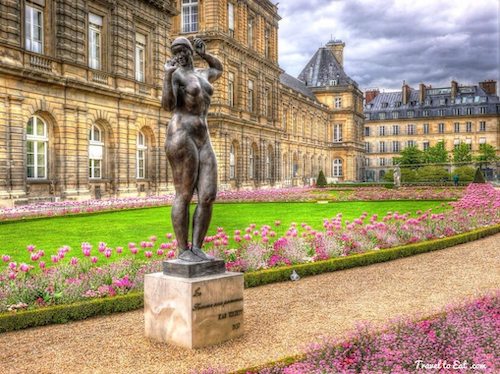
The area near the palace has the nicest gardens, beautiful collections of tulips, babies breath and periwinkles among others lining formal lawns with manicured hedges.

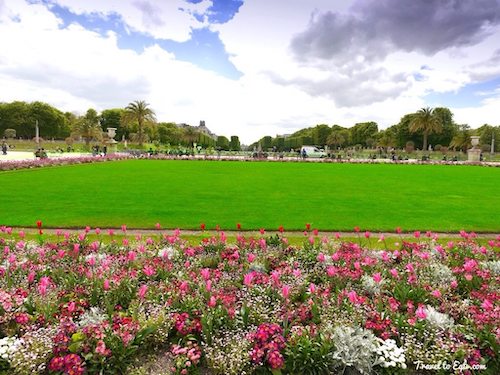
As you get near the front of the the Luxembourg palace, you can see down the full extent of the gardens. Way off in the distance, beyond its wrought iron grill and gates opening to rue Auguste Comte, you can see the central esplanade of the rue de l'Observatoire, officially the Jardin Marco Polo.
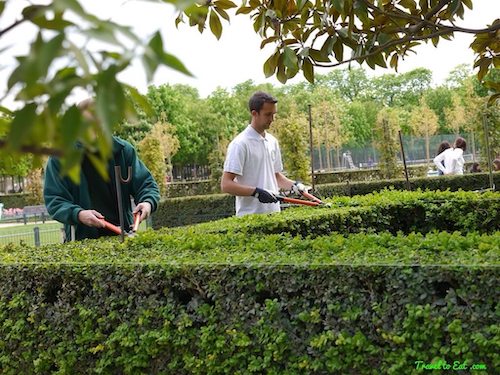
As we were walking along, we ran across these people trimming the hedges by hand. They had lines set up and seemed pretty intense about getting things just right. There are a lot of hedges in this garden, it is going to take a while.
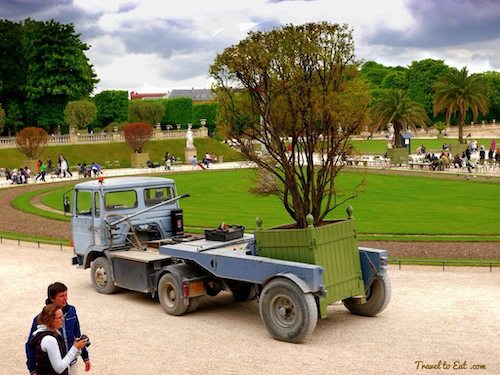
If you look around, there are lots of plants in big boxes, the type of plants that don't survive the winter well in Paris. They have a large building, an orangerie, that they store the plants in for the winter and then roll them out in the spring on these cool trucks.
Well that's it for the Luxembourg gardens, a beautiful place to relax and soak in the outdoors.

